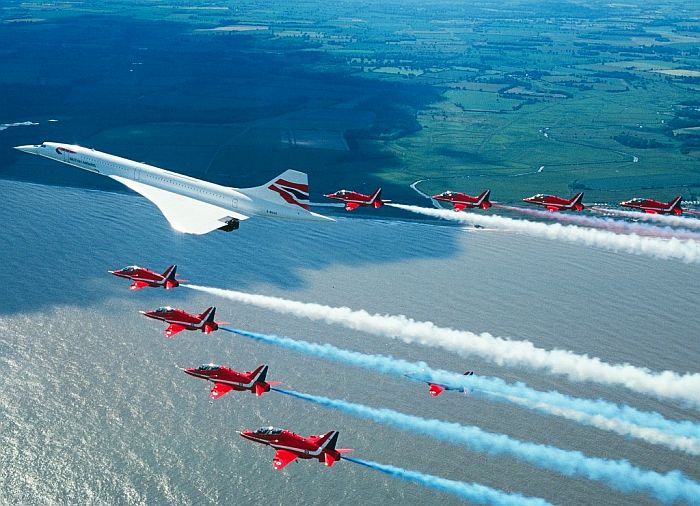The Concorde, an iconic supersonic passenger aircraft, made its last flight on October 24, 2003, marking the end of an era in aviation history. This remarkable aircraft was not only a feat of engineering but also a symbol of luxury and speed. Its ability to fly faster than the speed of sound captured the imagination of many and transformed international travel for a generation. In this article, we will explore the history of the Concorde, the events leading up to its last flight, and the legacy it left behind.
In this comprehensive guide, we will cover various aspects of the Concorde, including its design, operational challenges, and the reasons for its retirement. We will also delve into the impact of its last flight on aviation enthusiasts and the industry as a whole. By the end of this article, you will have a deeper understanding of why the Concorde remains one of the most celebrated aircraft in history.
Join us as we take a closer look at the Concorde's final journey, its significance in the realm of aviation, and what it means for the future of supersonic travel.
Table of Contents
- History of the Concorde
- Design and Features
- Operational Challenges
- The Last Flight
- Reasons for Retirement
- Legacy of the Concorde
- Future of Supersonic Travel
- Conclusion
History of the Concorde
The history of the Concorde dates back to the early 1960s when Britain and France collaborated to develop a supersonic passenger aircraft. The project was born out of a desire to push the boundaries of aviation technology and to create a faster means of long-distance travel.
After years of development, the Concorde made its maiden flight on March 2, 1969. It was a groundbreaking achievement, as it was the first commercial aircraft capable of flying at speeds exceeding Mach 2. The aircraft entered service in 1976, with British Airways and Air France as the primary operators.
Throughout its operational life, the Concorde was known for its elegant design and luxurious amenities, attracting celebrities and business elites alike. However, it also faced challenges, including high operating costs and environmental concerns, which would ultimately contribute to its retirement.
Design and Features
The design of the Concorde was a marvel of aerodynamics and engineering. Its sleek fuselage, delta wing shape, and powerful engines allowed it to achieve supersonic speeds with ease. Here are some key features:
- Speed: Capable of cruising at Mach 2.04 (around 1,354 mph).
- Range: Approximately 3,900 miles, enabling non-stop transatlantic flights.
- Seating Capacity: Typically accommodated 92 to 128 passengers, depending on the configuration.
- Luxury: Featured spacious cabins, gourmet meals, and personalized service.
Operational Challenges
Despite its impressive capabilities, the Concorde faced several operational challenges that ultimately impacted its longevity:
1. High Operating Costs
The cost of operating the Concorde was significantly higher than that of conventional aircraft. Factors such as fuel consumption, maintenance, and crew salaries contributed to these expenses, making ticket prices steep for passengers.
2. Environmental Concerns
The Concorde's supersonic speeds resulted in sonic booms, which led to restrictions on overland flights in many regions. Additionally, its high fuel consumption raised environmental concerns, prompting debates about sustainability in aviation.
The Last Flight
The Concorde's final flight took place on October 24, 2003, when British Airways Flight 002 took off from New York's John F. Kennedy International Airport. The aircraft, registration G-BOAG, flew to London's Heathrow Airport, completing its journey in just under three hours.
Onboard were 100 passengers, including aviation enthusiasts and journalists, who were eager to witness this historic flight. The atmosphere was bittersweet, as passengers celebrated the Concorde's legacy while acknowledging the end of an era.
Reasons for Retirement
Several factors led to the retirement of the Concorde:
- 2000 Crash: The tragic accident involving Air France Flight 4590 in July 2000 raised safety concerns and led to a temporary grounding of the fleet.
- Economic Downturn: The 9/11 attacks in 2001 and subsequent economic downturn greatly reduced demand for premium air travel.
- Ageing Fleet: As the aircraft aged, maintenance costs increased, making it less economically viable for airlines.
Legacy of the Concorde
The legacy of the Concorde extends far beyond its operational years. It remains a symbol of aviation innovation and luxury travel. The aircraft is often regarded as a cultural icon, representing the pinnacle of engineering and the pursuit of speed.
Today, the Concorde is celebrated in museums and aviation exhibits around the world, where enthusiasts can appreciate its design and history. Additionally, the Concorde's influence is seen in modern efforts to revive supersonic travel, with several companies working on new supersonic passenger aircraft.
Future of Supersonic Travel
As technology advances, the potential for a new generation of supersonic aircraft is becoming increasingly viable. Companies like Boom Supersonic and others are researching ways to create quieter, more environmentally friendly supersonic jets, aiming to bring back the thrill of flying faster than sound.
The lessons learned from the Concorde’s operational history will undoubtedly shape the future of supersonic travel, ensuring that safety, environmental impact, and economic viability are prioritized.
Conclusion
The Concorde’s last flight marked the conclusion of an extraordinary chapter in aviation history. Its unmatched speed, elegance, and luxury transformed air travel, leaving an indelible mark on the industry. While the Concorde may no longer take to the skies, its legacy lives on through the memories of those who experienced its remarkable flights and the ongoing pursuit of supersonic travel.
If you enjoyed this article or have any thoughts on the Concorde, please leave a comment below! Don’t forget to share this article with fellow aviation enthusiasts and explore more fascinating topics on our site.
Thank you for reading, and we hope to see you back here for more engaging content!
Jellied Eels: A Culinary Tradition Of London
Louis Tomlinson's Kids: A Comprehensive Insight Into His Fatherhood Journey
Stepson: The Movie - A Deep Dive Into The Heartfelt Story


